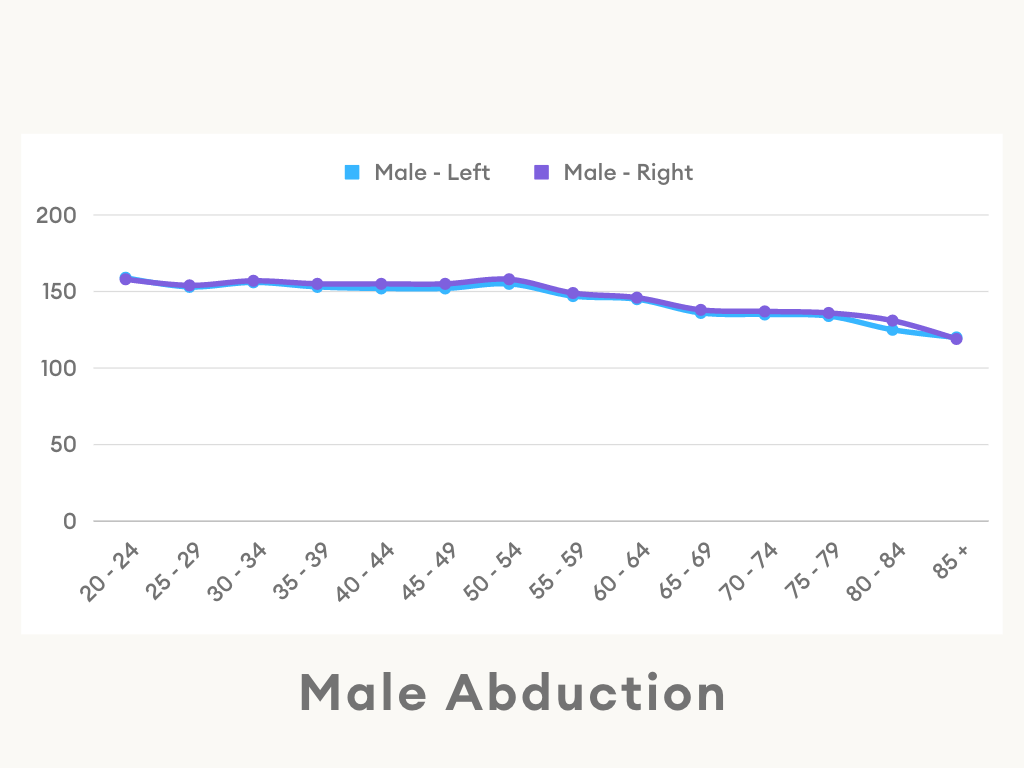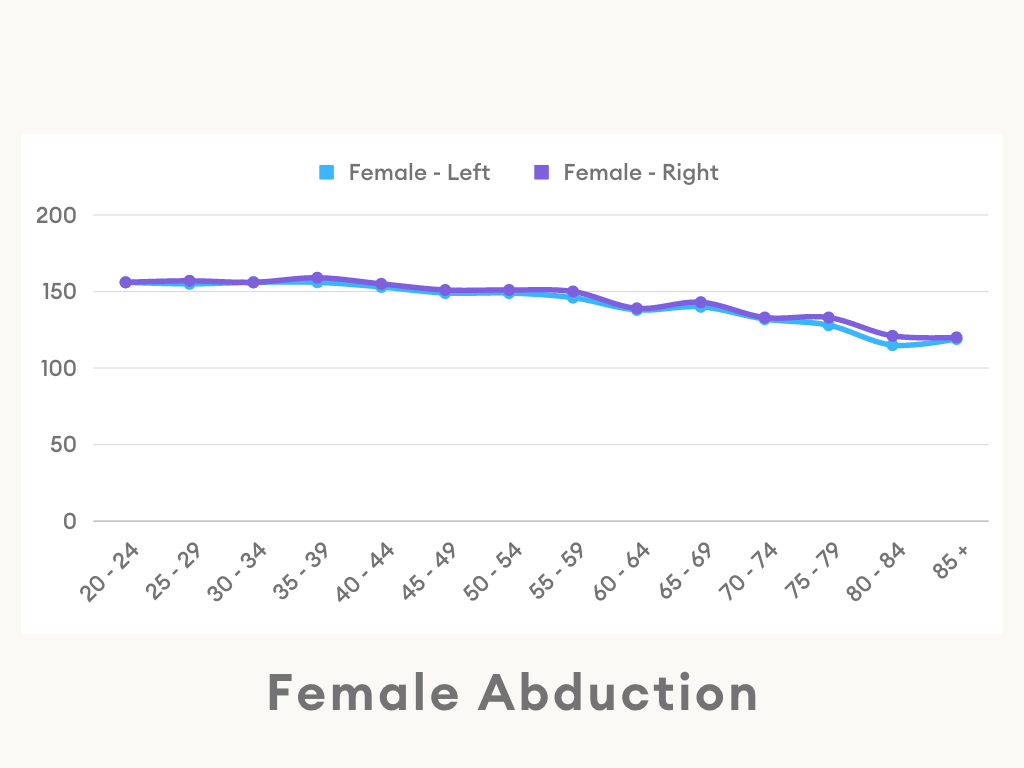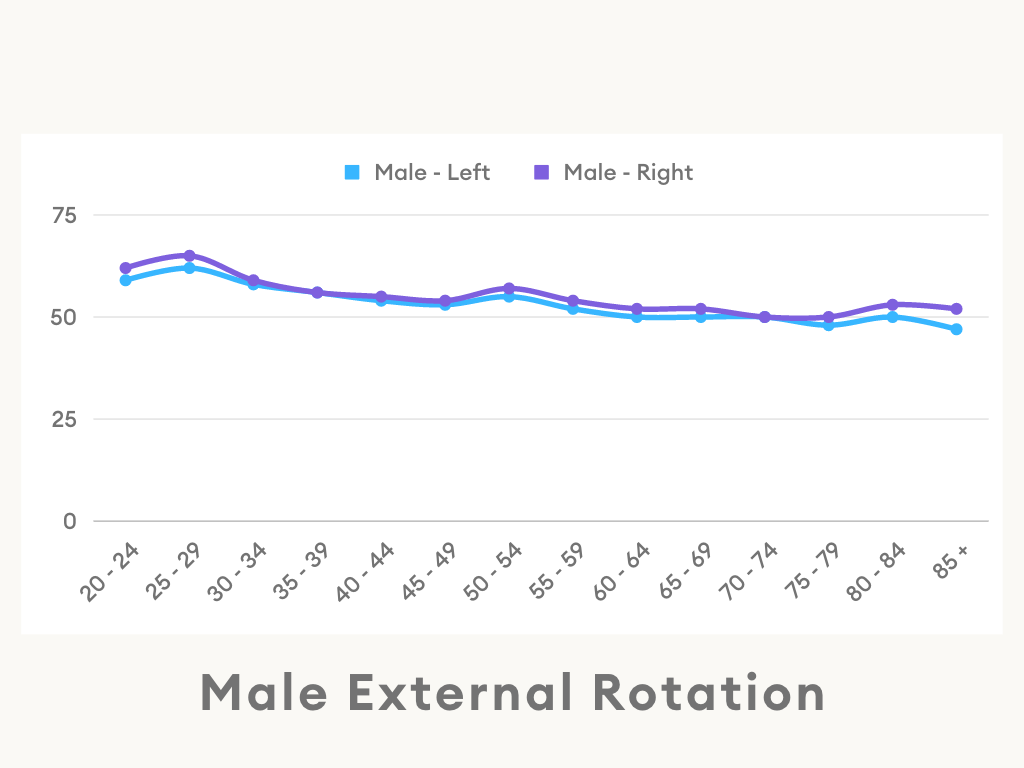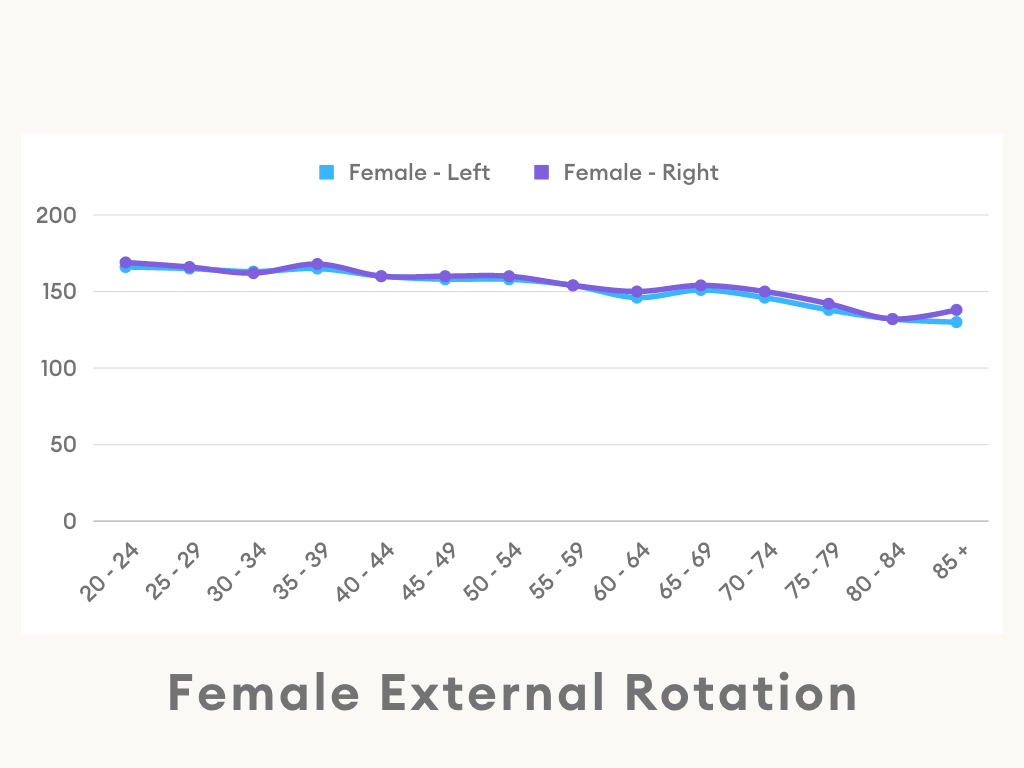FlexionIs an upgoing movement from the front side or the sagittal plane facilitated by the pectorals, anter More, AbductionIs a sideways upgoing movement in the frontal plane brought about by the supraspinatus and the mid More, ExtensionIs a backward going movement facilitated by the Latissimus dorsi a.k.a the largest back muscle in te More, External RotationThe range of shoulder external rotation is one of the most important metrics in the field of general More, Internal Rotation, and circumduction.
The American Academy of Orthopedic Surgeons states that the normal range of motion for the shoulder are 180° for Flexion and Abduction, and 90° for Internal and External Rotation. However, a study by BMC Musculoskeletal Disorders has shown that most people have a lower range of motion which is affected by age and health conditions, which is explored below.
What is the shoulder jointThe glenohumeral joint is a ball-and-socket synovial joint and is the most mobile joint in the human More
The shoulder joint is a ball-and-socket joint that allows for a wide range of motions, including flexion, abduction, extension, internal rotation, and external rotation.
Range of motion
The range of motion of a shoulder joint is the extent to which a shoulder can move, usually measured in degrees° from rest.
Range of motion can be active, where the limb is activated by the owner, or passive, where the limb is moved through movements by another force, such as by another person.
The main ranges of motion at the shoulder are:
Flexion
This is when you raise your arm up in front of you, like you’re waving goodbye. It’s the motion that brings your arm down from an overhead position.
The American Academy of Orthopedic Surgeons has stated that the normal active range of motion for Forward Flexion is 180°, however this study has shown that for most people, the range of motion is less than 180°. Furthermore, shoulder range of motion is affected by lifestyle and age.
The chart below shows the ranges of motion of the shoulder for flexion for males and females without shoulder injuries, plotted against age.
Range of Motion Chart Forward Flexion
| Male – Mean | Female – Mean | |||
| Age | Left | Right | Left | Right |
| 20 – 24 | 168 | 174 | 166 | 169 |
| 25 – 29 | 165 | 162 | 165 | 166 |
| 30 – 34 | 166 | 170 | 163 | 162 |
| 35 – 39 | 162 | 166 | 165 | 168 |
| 40 – 44 | 160 | 160 | 160 | 160 |
| 45 – 49 | 163 | 162 | 158 | 160 |
| 50 – 54 | 163 | 167 | 158 | 160 |
| 55 – 59 | 157 | 160 | 154 | 154 |
| 60 – 64 | 155 | 159 | 146 | 150 |
| 65 – 69 | 150 | 152 | 151 | 154 |
| 70 – 74 | 143 | 150 | 146 | 150 |
| 75 – 79 | 143 | 142 | 138 | 142 |
| 80 – 84 | 137 | 140 | 132 | 132 |
| 85 + | 130 | 136 | 130 | 138 |
Flexion is facilitated by the pectorals, anterior deltoid, coracobrachialis and weakly by the biceps. Injury to any of these muscles and related tendons will result in reduced range of motion of the shoulder.
Abduction
Abduction is when you move your arm away from your body, such as when you lift it up to shoulder height out towards the side.


| Male – Mean | Female – Mean | |||
| Age | Left | Right | Left | Right |
| 20 – 24 | 159 | 158 | 156 | 156 |
| 25 – 29 | 153 | 154 | 155 | 157 |
| 30 – 34 | 156 | 157 | 156 | 156 |
| 35 – 39 | 153 | 155 | 156 | 159 |
| 40 – 44 | 152 | 155 | 153 | 155 |
| 45 – 49 | 152 | 155 | 149 | 151 |
| 50 – 54 | 155 | 158 | 149 | 151 |
| 55 – 59 | 147 | 149 | 146 | 150 |
| 60 – 64 | 145 | 146 | 138 | 139 |
| 65 – 69 | 136 | 138 | 140 | 143 |
| 70 – 74 | 135 | 137 | 132 | 133 |
| 75 – 79 | 134 | 136 | 128 | 133 |
| 80 – 84 | 125 | 131 | 115 | 121 |
| 85 + | 120 | 119 | 119 | 120 |
Rotation
Rotation is when you rotate your arm at the shoulder, such as when you wind up for a pitch in baseball or screw in a light bulb. There are two types of rotation at the shoulder: medial (internal) rotation and lateral (external) rotation.
External Rotation
External Rotation, or Lateral Rotation, is when you rotate your arm outward, such as when you swing your arm out to the side.


| Male – Mean | Female – Mean | |||
| Age | Left | Right | Left | Right |
| 20 – 24 | 59 | 62 | 73 | 74 |
| 25 – 29 | 62 | 65 | 67 | 73 |
| 30 – 34 | 58 | 59 | 62 | 65 |
| 35 – 39 | 56 | 56 | 61 | 63 |
| 40 – 44 | 54 | 55 | 57 | 59 |
| 45 – 49 | 53 | 54 | 55 | 56 |
| 50 – 54 | 55 | 57 | 55 | 58 |
| 55 – 59 | 52 | 54 | 55 | 57 |
| 60 – 64 | 50 | 52 | 53 | 55 |
| 65 – 69 | 50 | 52 | 55 | 57 |
| 70 – 74 | 50 | 50 | 51 | 51 |
| 75 – 79 | 48 | 50 | 46 | 51 |
| 80 – 84 | 50 | 53 | 51 | 54 |
| 85 + | 47 | 52 | 48 | 49 |
Internal Rotation
Internal Rotation, or Medial Rotation, is when you rotate your arm inward, such as when you bring your arm across your body to touch your opposite shoulder.
Extension
Extension is when you move your arm behind your body, such as when you reach back to scratch your shoulder blade.
Why is maintaining good range of motion important for the shoulder joint?
Maintaining good range of motion in the shoulder joint is essential for optimal function and avoiding injury. If you don’t use your shoulder joint’s full range of motion, you may be more likely to injure it. By regularly stretching and exercising your shoulder muscles, you can maintain good range of motion and reduce your risk of injury.
Furthermore, if you have an injury you are more likely to sustain a further injury due to the weakness of the muscles and ligaments of the shoulder. Recovery from shoulder injury will include regaining Range of Motion through exercises and physiotherapy, and strengthening of the joint.
How can you maintain good range of motion in your shoulder joint?
You can maintain good range of motion in your shoulder joint by regularly stretching and exercising the muscles that support it. A combination of static and dynamic stretches, as well as strength-training exercises, is ideal. Regularly incorporating these activities into your routine will help to keep your shoulder joint healthy and prevent injury.
What are some common injuries to the shoulder joint?
Some common injuries to the shoulder joint include rotator cuffThe rotator cuff is a group of muscles and tendons that attach the shoulder blade to the upper arm b More tears, dislocations, and impingement syndrome. These injuries can be caused by overuse, repetitive motions, or acute trauma.
Conclusion
The ranges of motion of the shoulder are Flexion, Abduction, Extension, External Rotation, Internal Rotation, and circumduction. The ranges of motion for Forward Flexion is between 130° and 174°.
Regular exercise is key, and if a shoulder issue occurs, it’s important to monitor it closely to catch symptoms as early as possible.
